7 Best Bedding Types for Duck House You Can Offer!
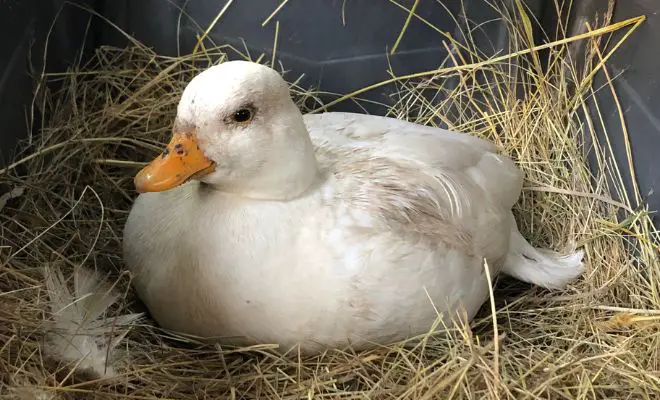
Keeping your ducks comfy and healthy means giving them a clean and cozy coop with bedding. The right bedding keeps them warm, absorbs moisture, and reduces odors. Some materials are better suited for ducks, offering the perfect blend of comfort, hygiene, and practicality.
Now, what could be the Best Bedding Types For Duck House? Materials like straw and wood shavings are popular, but each has its benefits and drawbacks. Bedding materials must be absorbent yet easy to clean and replace. Also, ensure it’s safe from chemicals and sharp objects that could harm your ducks.
Prefer to learn more about duck bedding? This guide will give you different duck beddings, and their pros and cons, to help you find the perfect fit!
Table of Contents
Why Do Ducks Need Ideal Bedding?
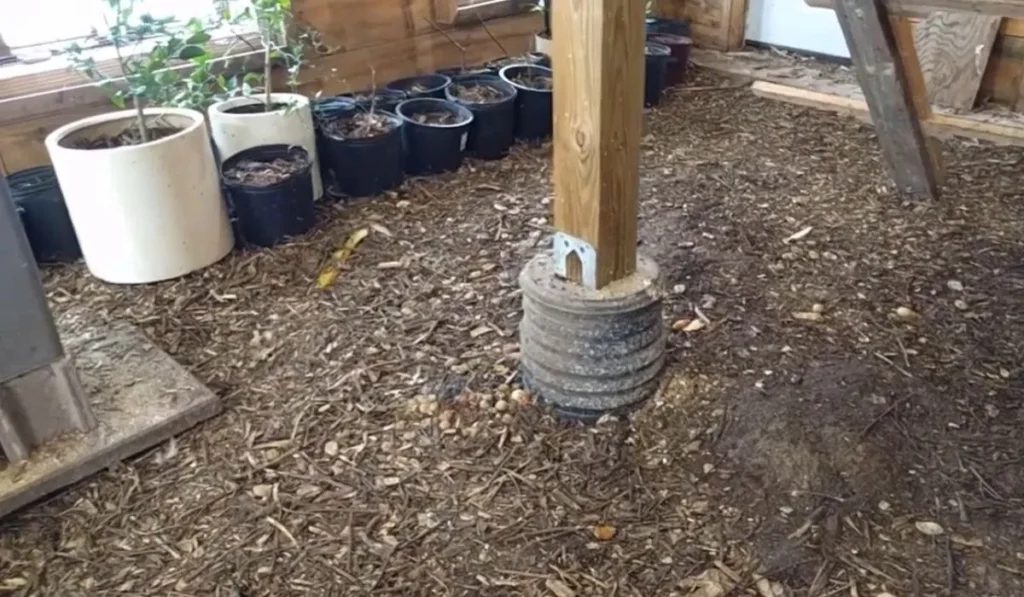
Ducks love to play in the water and rest in their coop, just like we enjoy hanging out in our cozy rooms. They need a nice place to live to be happy and healthy.
Here’s why picking the right bedding for ducks is super important:
Soaks Up Water
Ducks can be pretty messy with water. They splash around a lot, which can make their home very wet.
A good bedding helps suck up all that extra water, keeping their home dry and comfy. If it gets too wet, it can make the air stinky and hard for ducks to breathe.
Keeps Them Warm
Ducks also need to stay warm, especially when it’s cold outside. The right bedding is like a fluffy blanket that keeps them snug and warm. Without it, they might as well be sleeping on an ice rink!
Comfy for Their Feet
Ducks are on their feet a lot. Imagine walking around in shoes that don’t fit – ouch! They need soft bedding that feels good under their feet and keeps them from getting sore.
What are the Best Bedding Types for Ducks? 7 Most Popular Options!
There is no specific best duck bedding. So, here I included the types of bedding you can make for the feathered friends.
1. Straw Bedding
Straw is a popular bedding for ducks because it’s cheap, keeps them warm, and feels nice under their feet. But, let’s look at the good and the bad.
The good stuff is –
Straw costs little. It traps air, making a cozy bed for winter. It’s soft, so ducks like it. Also, you can get straws from many places.
Also, the not-so-good stuff is –
Straw doesn’t soak up water very well, so you need to clean the coop often. After a while, straw can get hard and lumpy, which isn’t nice for ducks.
If straw gets wet, it can attract mites, so you have to keep an eye out.
Tips for Using Straw:
- Deep Litter Method: This means adding more straw on top instead of cleaning it out all the time. It can help keep the coop smelling better, but watch out for too much wetness.
- Cut It Up: Smaller pieces of straw are easier to manage and clean.
- Mix It Up: Use a straw with other stuff like wood shavings to help soak up more water and keep things smelling fresh.
Similar to straw, hay provides good insulation and is comfortable for ducks’ feet. However, some types of hay can be dusty or have sharp seeds that could irritate your ducks.
2. Flake Wood Shavings
Wood shavings are a great bedding choice for ducks because they’re super absorbent. This means they can soak up a lot of the water that ducks splash around. So, it keeps the coop dry and prevents it from getting smelly.
Having bedding can handle all that moisture to avoid a muddy coop and stop bad smells from building up.
You can easily find wood shavings at pet stores or places that sell farm supplies. They usually come in big bags, which is handy and doesn’t hurt your wallet too much.
But, be careful with:
Some wood shavings, especially cedar. It can make dust that isn’t good for ducks to breathe in. Go for shavings like pine or aspen and try to get ones that are “kiln-dried” because they have less dust.
Tiny ducks (ducklings) shouldn’t be around certain types of wood shavings. It’s because it can be bad for them. It’s best to use safer options like pine or aspen for the little ones.
3. Hemp Bedding

Hemp bedding is becoming popular for ducks. So, why choose such kind of bedding?
Hemp bedding is great at soaking up water, just like wood shavings. This means it keeps the duck coop dry and helps stop it from smelling like wet ducks.
Hemp grows fast and doesn’t need much water or chemicals to grow.
The hemp fibers are soft, which is good for the ducks. It’s especially the baby ducks because it’s gentle on their feet.
Hemp bedding is really good at stopping bad smells. It doesn’t let bacteria that cause odors grow. So, your duck house stays smelling fresh.
On the flip side,
Hemp bedding can be pricier than other options like straw or wood shavings. Such bedding is not as easy to find everywhere as other types of bedding are.
4. Chopped Leaves
Looking for a budget-friendly and eco-conscious way to bed your ducks? Look no further than your own backyard!
The Good Stuffs are –
Fallen leaves are a free resource, readily available in the fall. Just grab your rake and get chopping!
Reusing leaves reduces waste and is a sustainable bedding option.
The Not-So-Good Stuffs are –
Chopped leaves can clump and become moldy if not chopped finely enough. Regular cleaning is essential to prevent moisture build-up.
Leaves aren’t the most absorbent bedding material. You might need to change them more frequently or combine them with other bedding like straw for better moisture control.
Tips for Success
Aim for small, even pieces to prevent clumping and mold growth.
Combine chopped leaves with a more absorbent option like straw for a cost-effective and functional blend.
Use clean, dry leaves free of pesticides to ensure your ducks’ health and safety.
5. Rice Hulls
Rice hulls are a potential bedding option for ducks.
You can use such bedding as it can be highly absorbent. It helps control moisture and odor in your duck coop. Rice hulls might be a cost-effective bedding choice in areas where rice is grown.
But there are some downsides! Rice hulls are lightweight and can easily blow around, creating a messy coop environment.
While absorbent, rice hulls don’t retain moisture as well as other options. Frequent cleaning might be necessary.
Rice hulls might not be readily available in all regions.
6. Recycled Paper Products
Shredded paper products like newspaper or cardboard can be a tempting bedding option, but let’s shred through the details.
Upsides are –
Reusing paper reduces waste and gives it a new purpose. Shredded paper can be a very affordable bedding choice. It’s especially if you have access to free materials.
If looking at the downsides –
Shredded paper isn’t very absorbent. It means frequent bedding changes are necessary to avoid a soggy coop.
Paper can clump and become uncomfortable for your ducks’ feet. Regular fluffing and spot cleaning are key.
7. Corn Cob Bedding
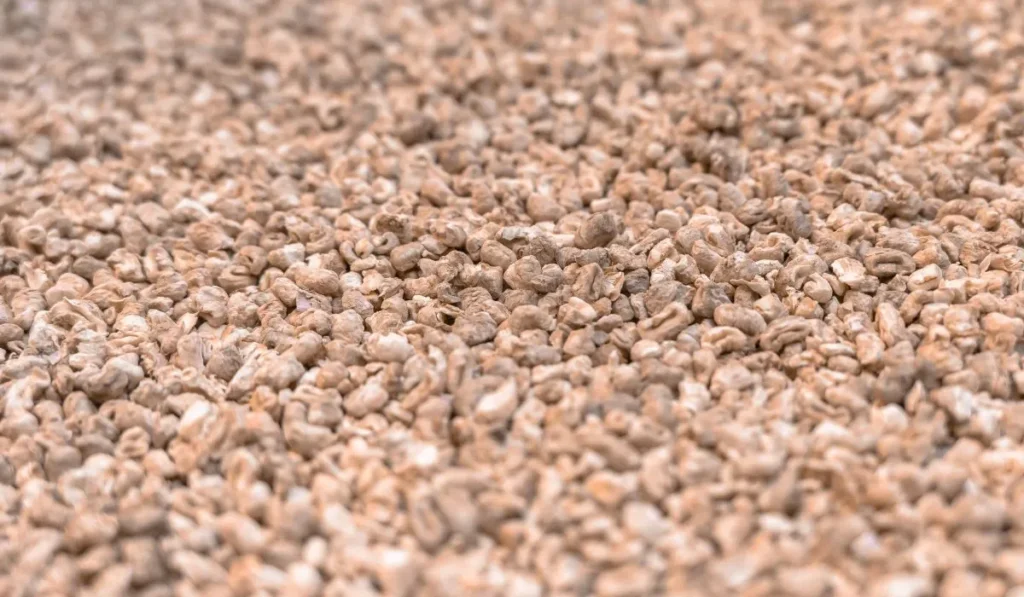
Corn cob bedding, made from ground-up corn cobs, is a potential option for ducks.
Corn cob bedding can be quite absorbent. This compostable and biodegradable, corn cob bedding aligns with eco-conscious practices.
On the flip side,
Ducks are curious creatures and may peck at their bedding. Corn cobs, if not processed finely enough, can pose a choking hazard or digestive problems.
Conventional corn often involves pesticides. Using such corn cob bedding could expose your ducks to harmful chemicals.
Also, corn cob bedding can become moldy if not kept dry and changed regularly.
Things to consider –
Ensure the corn cob is ground finely enough to prevent ingestion issues. Opt for smaller than ¼ inch pieces.
Look for corn cob bedding specifically treated for poultry use to minimize pesticide risks.
Regular cleaning and monitoring for dampness are crucial to prevent mold growth.
Special Note: You can use poop board under the roost. It’s a special addition to ducks.
Can I Offer Pine Needles as Duck Bedding?
Not a good option but not bad at all! You can use it if there is no other way. I found negative impacts the most!
Pine needles don’t soak up moisture well, which can lead to a damp and smelly coop environment. This creates health risks for your ducks, like ammonia buildup from wet droppings.
Pine needles can be sharp and uncomfortable for your ducks’ delicate feet. It’s flammable, making them a potential fire risk in your coop.
Some pine species release sap that can irritate your ducks’ respiratory systems.
Can I Use Sand Bedding for Ducks?
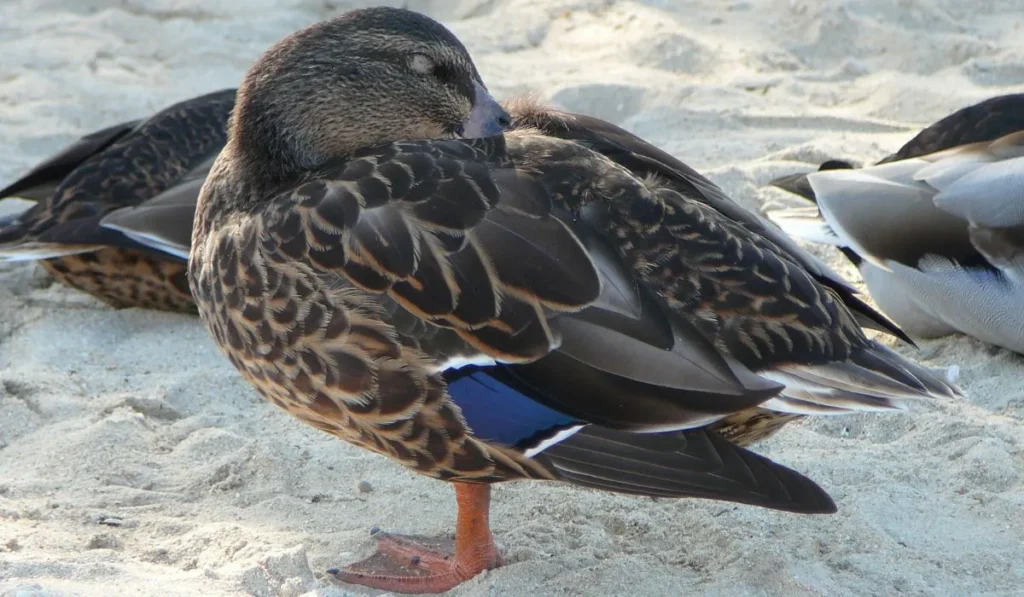
Sand isn’t a good choice as duck bedding. Here’s why:
- Not Absorbent Enough: Unlike good bedding options, sand doesn’t soak up moisture well. This can lead to a wet, smelly coop and potential health problems for your ducks.
- Fowl Weather Foe: While sand might seem warm, it doesn’t provide much insulation. Ducks need a cozy place to sleep, especially in colder climates.
- Foot Woes: While sand might seem soft, it can actually be abrasive on ducks’ sensitive feet.
However, there can be a limited use case for sand:
A small layer of sand can be used around water dishes or feeders. It’s to help with drainage and prevent mud.
Can I use Peat Moss as Duck Bedding?
No, it’s not recommended to use peat moss as duck bedding. Here’s why:
- Dust Issues: Peat moss can be very dusty, which can irritate your ducks’ respiratory systems, causing problems like coughing or difficulty breathing.
- Moisture Management: While absorbent, peat moss can hold onto too much moisture, creating a soggy mess in the coop. This promotes ammonia buildup from duck droppings, which is harmful to your ducks.
- Moldy Menace: Damp peat moss is a breeding ground for mold spores. Inhaling mold spores can cause respiratory problems in ducks.
- Acidity Concerns: Peat moss has a naturally acidic nature. While not necessarily harmful in small amounts, excessive acidity could irritate your ducks’ feet or potentially impact egg production.
However, you can see the video to get more information about duck bedding and what to use.
How to Maintain Duck Coop Bedding?
It’s easy to maintain duck bedding when you decide to monitor the duck coop. Here are tips to keep in mind –
- Spot clean regularly to remove wet areas and droppings.
- Add fresh bedding on top regularly, especially with the Deep Litter Method.
- Rotate bedding completely every few months.
- Ensure bedding is at least 3 to 4 inches deep to provide insulation and comfort.
- Dampness leads to ammonia buildup, so adjust cleaning or bedding choices if needed.
- Provide separate nesting material like straw or hay for egg-laying comfort.
- Maintain coop ventilation to prevent moisture buildup and ensure fresh air.
Special Point: Observe your ducks for signs of discomfort or respiratory issues that might be related to the bedding.
Related Reads:
- Ramps vs. Ladders: What Will Be the Best?
- 9 Backyard Duck Coop Idea
- Chicken Run Roof Ideas for All Climates
- DIY Poultry Coop Spray that Works Best!
FAQs
You can check out the following queries to know more about duck bedding.
Q. What is duck-down bedding?
Not for ducks! It’s a cozy filling for human comforters. Ducks need straw or wood shavings for their coop.
Q. Do ducks have to have bedding?
Yes! As I said, bedding is necessary to absorb moisture, keep them warm, and provide a soft surface for their feet.
Q. What is the warmest bedding for ducks?
Straw provides good insulation, especially in colder climates. Hemp bedding is another warm option, but pricier.
Final Word
Ensuring your ducks have the best bedding is vital for their well-being and happiness. Options like straw, wood shavings, and hemp bedding offer unique advantages. Such as keeping them dry, cozy, and free from unpleasant odors.
Maintaining a clean and thick bedding layer, coupled with regular changes and attentive observation. While materials like sand or peat moss might seem appealing, they could present risks to your ducks’ health and comfort. It’s best to prioritize safer alternatives that promote their overall welfare.



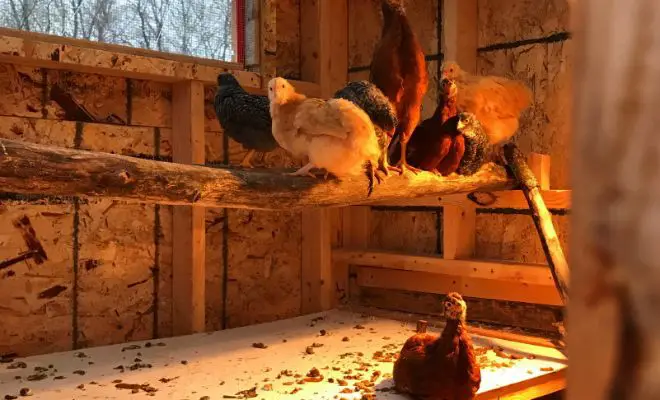
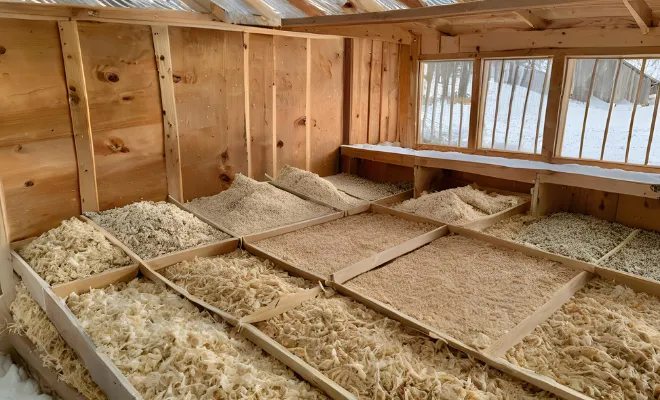
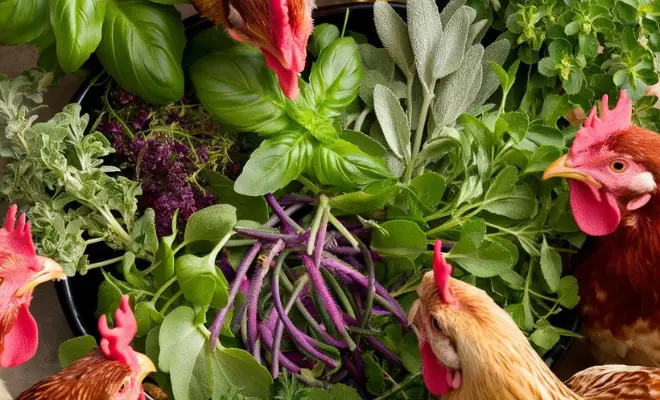

Soaking up water is bad not good, you want it to drain water, not soak it up. You only want the bedding to soak up water if you want the bedding to rot and mold regularly. You want a coop with good drainage and none of the suggestions you push for offer those things. Some of them are good for nesting boxes or for places where you wish them to sleep or gather when they are cold, but not for the bedding that makes up the floor of the coop.
Bedding that soaks up water only becomes wet bedding. Wet bedding is the cause of many of the feet issues that come up for Ducks. You want bedding that will drain and dry quickly. All of the beddings you suggest do not dry quickly, they soak up water and retain it.
Your issues with sand are misinformation. While sand doesn’t absorb water, it does drain and dry very quickly. If the area you are in doesn’t have good drainage to the point where you see standing water on the sand, then it is going to be even worse with any of the bedding types you suggest, because the bedding itself is going to be inundated with water, promoting rot, mold, bugs, and parasites.
When the weather gets cold you can quite easily place warmer materials on top of the sand in certain parts of the coop which can be used by the ducks to keep warm. You can even set up the area in such a way that the bedding for warmth does not get wet.
If your Ducks feet are getting hurt by sand, then you are buying the wrong kind of sand. If you purchase the kind of sand that is widely sugggested, then the sand will be soft on your ducks feet and not bother them in the slightest.